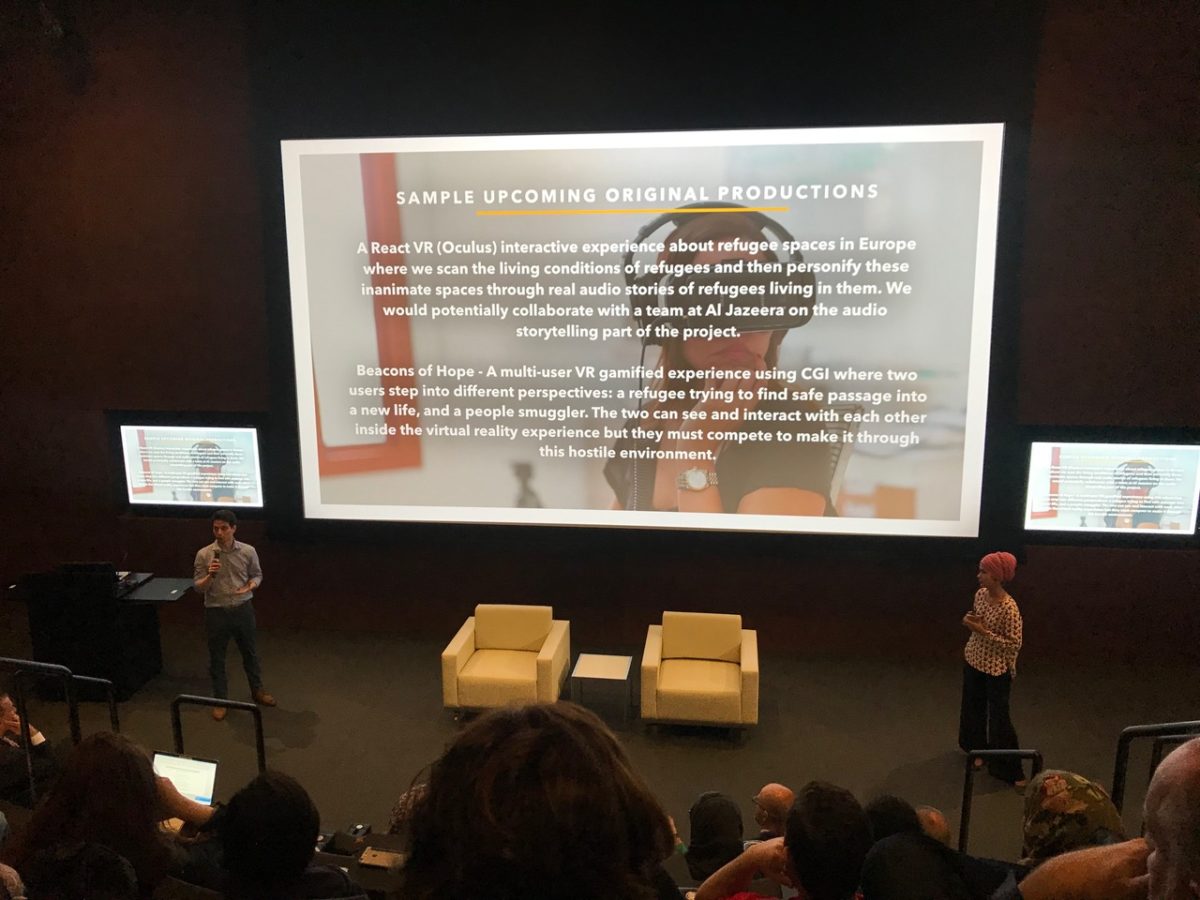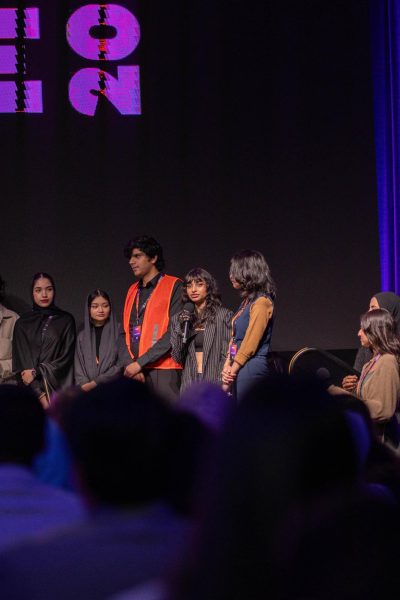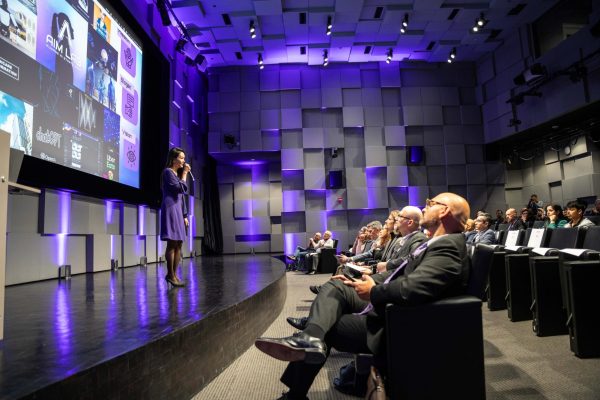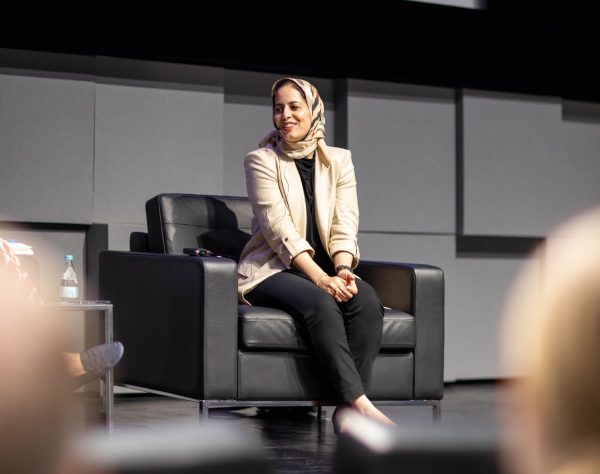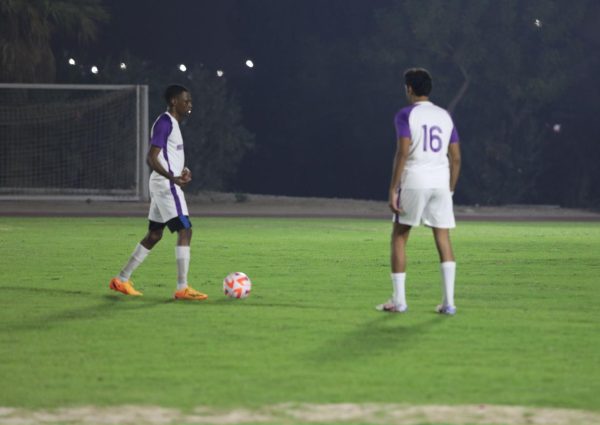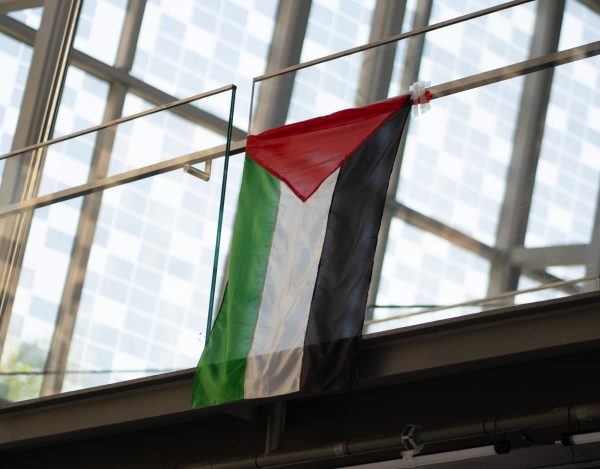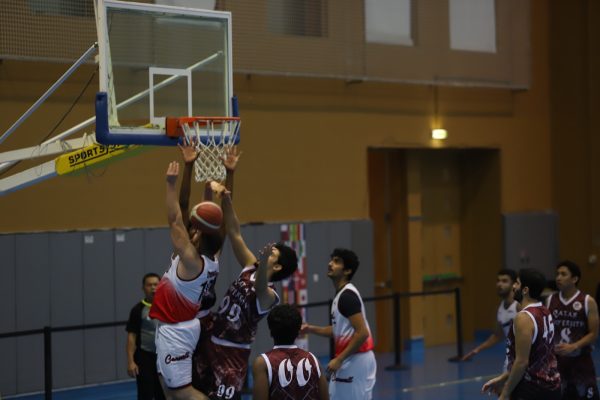Virtual reality enhances Al Jazeera’s journalistic storytelling
Virtual reality tools have enhanced Al Jazeera’s storytelling style, said Zahra Rasool, the editorial lead for an Al Jazeera English virtual reality project known as Contrast VR. She spoke at a community presentation at Northwestern University in Qatar on Sunday, Oct. 1.
“We want to identify real pressing stories from around the world and take viewers directly into them,” said co-presenter Ousama Itani, who is the project lead for Contrast VR.
Rasool and Itani spoke to more than 90 students, faculty and staff about Contrast VR, which was established in 2015 and lets viewers experience what it is like to be immersed in a story.
According to Rasool, stories take place at the scene of the action, so virtual reality uses animation to build onto the surroundings and provides a clear image that can resonate with viewers.
Virtual reality helps tell multiple stories at the same time, Rasool added, citing how the innovation team produced a story on oil spills damaging Nigerian communities, which only consisted of one shot and displayed two different sides of the story.
Several editorial strategies are used by the innovation team at Al Jazeera English to achieve this, including social videos, original documentation, and internal training, Rasool explained.
“It is important to know how to use different mediums for different forms of storytelling,” she said.
Partnerships are also important when creating virtual reality stories, Itani said. A recent story the innovation team made on the Rohingya refugee crisis involved partnering with Amnesty International, he added.
Many members of the audience said they were extremely impressed with the idea of combining journalistic storytelling with virtual reality and applying animation in 360-degree videos.
“Sometimes when we look at news, we fail to acknowledge the emotions involved,” said Danna Takriti, a member of the audience and a freshman at NU-Q. “I feel that this type of technology will help shape our emotions into a better understanding of what really goes on in people’s lives.”
“I am not necessarily interested in journalistic storytelling through virtual reality, but I like how they incorporated animation in their works,” said Oleksandra Kotsyrii, a freshman at NU-Q.
Itani said the innovation team is aware of the limited number of viewers that watch their content, but they are nonetheless adamant about moving forward in this field. The future of technology is developing and virtual reality is just the beginning, he added.
The innovation team at Al Jazeera English gave members of the audience cardboard lenses with slots to insert their phones in and experience virtual reality for themselves.
After testing it out, Amal Barakat, a freshman at NU-Q, described seeing an African village with people around her, as well as a moving truck that had people hanging out of it.
“I feel like if virtual reality gets used more often in the future, not only would news be more relatable in a way, but it would be more interesting so you’ll get a bigger audience and maybe even younger age categories,” Barakat said.



